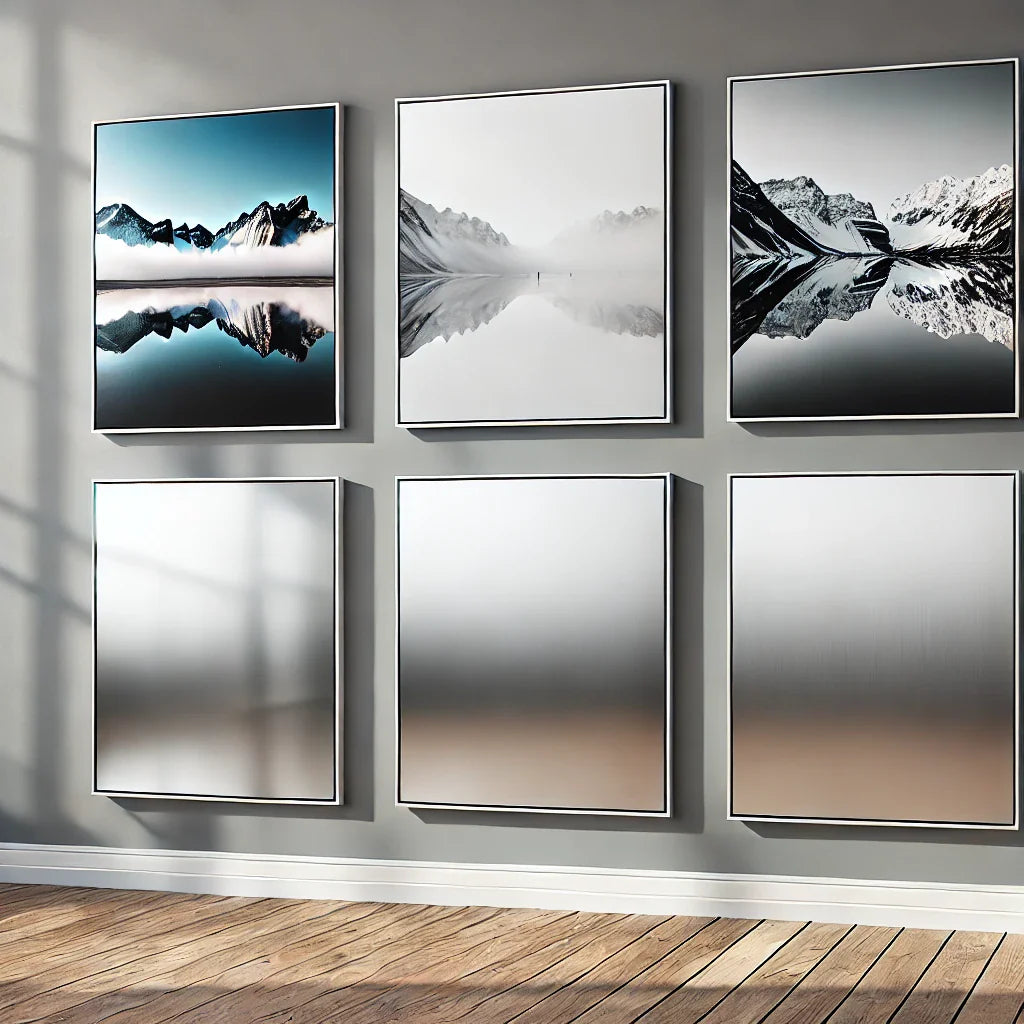In the evolving landscape of sustainable practices, industries across the globe are adopting environmentally friendly solutions to minimize their ecological impact.
Among these advancements, printing on aluminum sheets has emerged as a remarkable method, combining durability, versatility, and sustainability.
This article delves into the myriad ways aluminum sheet printing contributes to waste reduction while exploring its benefits and applications.
Understanding Aluminum Sheet Printing
Printing on aluminum sheets is a modern printing technique where images, text, or graphics are transferred onto aluminum surfaces using methods like dye sublimation or UV printing.
This process is popular in industries such as signage, advertising, interior design, and fine art, offering exceptional visual clarity and durability.
Unlike traditional printing methods that rely on paper or other fragile substrates, aluminum printing provides a robust and long-lasting alternative, reducing the frequency of replacements and, consequently, waste.
Environmental Benefits of Printing on Aluminum Sheets
Recyclability of Aluminum
Aluminum is one of the most recyclable materials available. Recycling aluminum requires only 5% of the energy needed to produce it from raw materials, making it highly energy-efficient. Printed aluminum sheets can be recycled at the end of their lifecycle, significantly reducing landfill contributions compared to other substrates like plastic or paper.
Durability Reduces Replacement Waste
Aluminum sheets are known for their strength and resistance to environmental factors such as UV rays, moisture, and temperature fluctuations. These properties make them ideal for applications like outdoor signage and displays. The long lifespan of aluminum prints means less frequent replacements, resulting in reduced waste production over time.
Eliminating the Need for Protective Coatings
Many printing substrates require additional protective layers to withstand environmental stress. Aluminum sheets, however, are naturally resilient and often require minimal coating, reducing the use of harmful chemicals and additional materials.
Reduction in Paper Waste
Transitioning to aluminum sheet printing eliminates the need for paper-based printing in many applications. The global demand for paper contributes to deforestation and significant waste. By opting for aluminum, businesses can reduce reliance on paper and contribute to environmental conservation.
Economic Advantages of Printing on Aluminum Sheets
The environmental benefits of printing on aluminum sheets align seamlessly with economic incentives. Here’s how businesses can save costs while adopting sustainable practices:
-
Long-Term Cost Savings While the initial cost of printing on aluminum sheets may be higher than paper or plastic, the extended lifespan of aluminum prints offsets this expense. Businesses spend less on frequent replacements, making aluminum printing a cost-effective choice in the long run.
-
Lower Disposal Costs Recyclable materials like aluminum incur lower disposal costs compared to non-recyclable waste. By using aluminum sheets, companies can save on waste management expenses and contribute to a circular economy.
-
Enhanced Brand Image Adopting sustainable practices, such as printing on aluminum sheets, enhances a company’s reputation. Consumers today are more likely to support businesses committed to environmental responsibility, leading to increased customer loyalty and brand equity.
Applications of Aluminum Sheet Printing
The versatility of aluminum printing makes it suitable for various industries and purposes. Here are some prominent applications:
-
Signage and Advertising Businesses frequently use aluminum prints for outdoor and indoor signage due to their durability and ability to maintain vibrant colors over time. Aluminum signs are resistant to fading, ensuring long-lasting advertising materials that reduce the need for frequent reprints.
-
Fine Art and Photography Printing photographs and artwork on aluminum sheets has gained popularity in the art world. The process offers a sleek, modern aesthetic and unparalleled clarity, making it a preferred medium for professional photographers and artists.
-
Interior Design Aluminum prints are often used in home and office décor due to their elegant finish and durability. They are perfect for creating high-impact wall art, kitchen backsplashes, and custom designs that stand the test of time.
-
Industrial Applications In industrial settings, aluminum sheets are used to create durable labels, tags, and safety signs. These applications require materials that can withstand harsh environments, making aluminum an ideal choice.
How to Reduce Waste Further with Aluminum Printing
While aluminum sheet printing is inherently sustainable, there are additional steps businesses and individuals can take to maximize waste reduction:
-
Choose Recycled Aluminum Opt for aluminum sheets made from recycled materials. Many manufacturers offer products created using post-consumer aluminum, which further reduces environmental impact.
-
Optimize Print Runs Efficient planning of print runs minimizes material wastage. By accurately estimating the required number of prints and using advanced design software, businesses can avoid overproduction and reduce excess waste.
-
Adopt Eco-Friendly Printing Practices Using non-toxic inks and energy-efficient printers can further enhance the sustainability of printing on aluminum sheets. Eco-friendly printing practices ensure that the process aligns with environmental conservation goals.
-
Encourage Recycling Educate customers and end-users about recycling aluminum prints after their useful life. Providing information on local recycling facilities or buy-back programs can ensure that aluminum sheets are properly recycled.
Comparison: Aluminum Sheet Printing vs. Traditional Substrates
|
Feature |
Aluminum Sheets |
Paper |
Plastic |
|
Durability |
High durability, resistant to weather, UV rays, and wear. Ideal for long-term applications. |
Prone to tearing, fading, and damage from moisture. Short lifespan, especially outdoors. |
Susceptible to cracking, fading, and damage under extreme conditions. Less durable than aluminum. |
|
Environmental Impact |
Fully recyclable with minimal energy. Produces less waste and supports circular economy initiatives. |
Contributes to deforestation. Coated papers are harder to recycle. High water and energy usage. |
Non-biodegradable, major contributor to landfill waste. Recycling is often challenging and limited. |
|
Visual Appeal |
Offers sleek, modern aesthetics with vibrant colors and a glossy or matte finish. |
Limited color vibrancy, especially in high-exposure areas. Appearance degrades quickly outdoors. |
Glossy options available, but colors may fade over time. |
|
Weather Resistance |
Resistant to water, heat, and cold, making it suitable for indoor and outdoor use. |
Poor weather resistance; paper deteriorates rapidly when exposed to moisture or sunlight. |
Moderate weather resistance; can warp or fade in extreme conditions. |
|
Lifespan |
Can last decades with minimal maintenance, reducing need for replacements. |
Typically lasts months to a few years, requiring frequent reprints. |
Can last years indoors but has a shorter lifespan in outdoor conditions. |
|
Cost |
Higher initial cost but economical in the long term due to durability and low replacement frequency. |
Lower upfront cost, but frequent replacements increase overall expense over time. |
Low upfront cost, but environmental and disposal costs are high. |
|
Maintenance |
Easy to clean and maintain. Resistant to scratches and stains. |
Difficult to maintain in pristine condition; prone to dirt and damage. |
Moderate maintenance needed to prevent wear and tear. |
|
Sustainability |
Sustainable and eco-friendly. Made from recycled materials and fully recyclable at end of life. |
Limited sustainability; requires natural resources like trees and large amounts of water to produce. |
Not sustainable; often made from petroleum-based products and poses significant environmental harm. |
|
Applications |
Ideal for signage, displays, art, industrial tags, and home décor. |
Common in temporary posters, flyers, and low-cost prints. |
Popular for disposable items like banners and packaging materials. |
|
Print Quality |
High-definition prints with excellent color depth and detail. |
Good print quality, but colors may fade quickly in challenging environments. |
Decent print quality; often lacks the vibrant and precise detailing of aluminum. |
|
Recyclability |
Easily recyclable without loss of quality; retains value in recycling markets. |
Recyclability depends on type; coated paper is challenging to recycle. |
Technically recyclable but rarely processed due to high costs and low demand. |
|
Customizability |
Offers options like brushed finishes, gloss, matte, or textured surfaces. |
Limited customization for durability; coatings may affect recyclability. |
Moderate customization options but usually less elegant than aluminum. |
|
Weight |
Lightweight yet sturdy, making it easy to transport and install. |
Lightweight but fragile, requiring careful handling. |
Lightweight, but some variations are prone to bending or cracking. |
|
Chemical Resistance |
Resistant to most chemicals, ensuring prints remain intact in industrial or harsh environments. |
Poor chemical resistance; deteriorates quickly when exposed to solvents or acids. |
Moderate chemical resistance, but certain chemicals can degrade it. |
Challenges in Adopting Aluminum Sheet Printing
Despite its numerous benefits, printing on aluminum sheets comes with challenges:
-
Initial Investment The equipment and materials required for aluminum sheet printing can be costly, posing a barrier for small businesses or individuals.
-
Limited Accessibility Not all printing facilities offer aluminum sheet printing, limiting its availability in some regions.
-
Skill and Expertise Achieving high-quality results in aluminum printing requires expertise. Businesses may need to invest in training or hire skilled professionals to manage the process.
Printing on Aluminum Sheet Services
Transform your visuals with professional printing on aluminum sheet.
Whether you need vibrant signage, stunning wall art, or durable industrial labels, aluminum sheet printing offers unparalleled durability, sleek finishes, and eco-friendly benefits.
Ready to elevate your designs? Explore premium options at Aluminyze and create prints that stand the test of time.
Future Trends in Aluminum Sheet Printing
The adoption of aluminum sheet printing is poised to grow as technology advances and sustainability becomes a global priority. Emerging trends include:
-
Smart Printing Technologies Integration of IoT and AI in aluminum printing processes will enable more efficient and precise production, reducing material waste further.
-
Development of Eco-Friendly Inks Innovations in ink technology are focusing on creating biodegradable and non-toxic options that complement the sustainability of aluminum sheet printing.
-
Expansion of Applications As awareness of its benefits increases, aluminum printing is likely to expand into new industries, including automotive, aerospace, and consumer electronics.
Conclusion
Printing on aluminum sheets represents a significant step forward in reducing waste and embracing sustainable practices.
Its recyclability, durability, and versatility make it an ideal choice for businesses and individuals aiming to minimize their environmental impact.
By adopting aluminum printing, industries can align their operations with global sustainability goals while benefiting from long-term cost savings and enhanced brand image.
As technology evolves and awareness grows, aluminum sheet printing is set to play an even greater role in shaping a sustainable future.
For businesses and individuals seeking to reduce waste and create high-quality, lasting prints, the choice is clear: embrace the brilliance and sustainability of aluminum printing.
FAQ’s
What is printing on aluminum sheets, and how does it work?
Printing on aluminum sheets involves transferring images, text, or graphics onto aluminum surfaces using techniques like dye sublimation or UV printing. This process produces high-definition, durable prints ideal for signage, art, and industrial applications.
How does printing on aluminum sheets reduce waste?
Aluminum sheets are recyclable and highly durable, reducing the need for frequent replacements. Unlike paper or plastic, they have a longer lifespan and contribute less to landfill waste.
Is printing on aluminum sheets more expensive than traditional methods?
While the initial cost of aluminum printing may be higher, its durability and recyclability result in long-term cost savings by reducing the need for frequent reprints and lowering waste disposal costs.
What are the primary applications of printing on aluminum sheets?
Common uses include outdoor and indoor signage, fine art and photography, interior design elements, and industrial labels or tags. The material's strength and resistance to environmental factors make it highly versatile.
Can printed aluminum sheets be recycled?
Yes, printed aluminum sheets are fully recyclable without a loss in quality. This makes them an environmentally friendly alternative to other substrates like paper and plastic. Recycling them helps support a circular economy.





